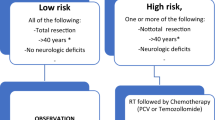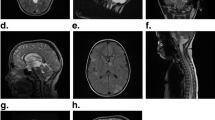Abstract
Malignant astrocytoma is the most common malignant tumor with strong invasion in the central nervous system. Tanshinone IIA is an effective compound to suppress cell proliferation and promote cell apoptosis. However, there is little research about the role of tanshinone IIA in the treatment of astrocytoma. This study aimed to investigate the effect of tanshinone IIA on migration, proliferation and apoptosis of astrocytoma cells. The efficacy of tanshinone IIA on migration, proliferation and apoptosis of astrocytoma cells were evaluated by flow cytometry and the assays of plate clone formation, CCK-8, wound healing and transwell migration. The protein molecule and signaling pathway were detected by western blot. High-dose tanshinone IIA suppressed migration and proliferation of astrocytoma cells while promoting apoptosis of astrocytoma cells. The western blot results showed that there were high Notch-1 protein expression and low c-Myc, MMP-9 and Bcl-2 activation in the high-dose tanshinone IIA group compared with the control group. High-dose tanshinone IIA suppresses astrocytoma cell proliferation, migration while promoting apoptosis through Notch-1 pathway. Tanshinone IIA may be used to develop new drugs for the treatment of astrocytoma.




Similar content being viewed by others
References
Yu Z, Sun Y, She X et al (2017) SIX3, a tumor suppressor, inhibits astrocytoma tumorigenesis by transcriptional repression of AURKA/B. J Hematol Oncol 10:115
Stupp R, Brada M, van den Bent MJ, Tonn JC, Pentheroudakis G, Group EGW (2014) High-grade glioma: ESMO clinical practice guidelines for diagnosis, treatment and follow-up. Ann Oncol 25(Suppl 3):iii93–i101
Furnari FB, Fenton T, Bachoo RM et al (2007) Malignant astrocytic glioma: genetics, biology, and paths to treatment. Genes Dev 21:2683–2710
Chen J, Li Y, Yu TS et al (2012) A restricted cell population propagates glioblastoma growth after chemotherapy. Nature 488:522–526
Westermark B (2012) Glioblastoma: a moving target. Ups J Med Sci 117:251–256
Giese A, Bjerkvig R, Berens ME, Westphal M (2003) Cost of migration: invasion of malignant gliomas and implications for treatment. J Clin Oncol 21:1624–1636. https://doi.org/10.1200/JCO.2003.05.063
Wild-Bode C, Weller M, Rimner A, Dichgans J, Wick W (2001) Sublethal irradiation promotes migration and invasiveness of glioma cells: implications for radiotherapy of human glioblastoma. Cancer Res 61:2744–2750
Di Nicolantonio F, Mercer SJ, Knight L et al (2005) Cancer cell adaptation to chemotherapy. BMC Cancer 5:78
Wu Y, Zhou BP (2008) New insights of epithelial-mesenchymal transition in cancer metastasis. Acta Biochim Biophys Sin (Shanghai) 40:643–650
Hatzikirou H, Basanta D, Simon M, Schaller K, Deutsch A (2012) ‘Go or grow’: the key to the emergence of invasion in tumour progression? Math Med Biol 29:49–65
Ren B, Zhang YX, Zhou HX et al (2015) Tanshinone IIA prevents the loss of nigrostriatal dopaminergic neurons by inhibiting NADPH oxidase and iNOS in the MPTP model of Parkinson’s disease. J Neurol Sci 348(1–2):142–152
Li F, Han G, Wu K (2016) Tanshinone IIA alleviates the AD phenotypes in APP and PS1 transgenic mice. BioMed Res Int 2016:8
Lin TY, Lu CW, Huang SK, Wang SJ (2013) Tanshinone IIA, a constituent of Danshen, inhibits the release of glutamate in rat cerebrocortical nerve terminals. J Ethnopharmacol 147(2):488–496
Wu TW, Zeng LH, Fung KP et al (1993) Effect of sodium tanshinone IIA sulfonate in the rabbit myocardium and on human cardiomyocytes and vascular endothelial cells. Biochem Pharmacol 46:2327–2332
Lin R, Wang WR, Liu JT, Yang GD, Han CJ (2006) Protective effect of tanshinone IIA on human umbilical vein endothelial cell injured by hydrogen peroxide and its mechanism. J Ethnopharmacol 108:217–222
Fu J, Huang H, Liu J, Pi R, Chen J, Liu P (2007) Tanshinone IIA protects cardiac myocytes against oxidative stress-triggered damage and apoptosis. Eur J Pharmacol 568(1–3):213–221
Ranganathan P, Weaver KL, Capobianco AJ (2006) Notch signalling in solid tumours: a little bit of everything but not all the time. Nat Rev Cancer 11:338–351
Miele L (2006) Notch signaling. Clin Cancer Res 12:1074–1079
Merino D, Bouillet P (2009) The Bcl-2 family in autoimmune and degenerative disorders. Apoptosis 14:570–583
Domingo-Domenech J, Vidal SJ, RodriguezBravo V et al (2012) Suppression of acquired docetaxel resistance in prostate cancer through depletion of notchand hedgehog-dependent tumor-initiating cells. Cancer Cell 22:373–388
Perumalsamy LR, Nagala M, Sarin A (2010) Notch-activated signaling cascade interacts with mitochondrial remodeling proteins to regulate cell survival. Proc Natl Acad Sci USA 107:6882–6887
Mingueneau M, Kreslavsky T, Gray D et al (2013) The transcriptional landscape of alphabeta T cell differentiation. Nat Immunol 14:619–632
Will B, Vogler TO, Bartholdy B et al (2013) Satb1 regulates the self-renewal of hematopoietic stem cells by promoting quiescence and repressing differentiation commitment. Nat Immunol 14:437–445
Zheng CG, Chen R, Xie JB, Liu CB, Jin Z, Jin C (2015) Immunohistochemical expression of Notch1, Agged1, NF-κB and MMP-9 in colorectal cancer patients and the relationship to clinicopathological parameters. Cancer Biomark 15(6):889–897
Li Z, Chen X, Lu W et al (2017) Anti-oxidative stress activity is essential for Amanita caesarea Mediated neuroprotection on glutamate-induced apoptotic ht22 cells and an Alzheimer’s disease mouse model. Int J Mol Sci 18:1623
Hou Y, Feng S, Wang L et al (2017) Inhibition of Notch-1 pathway is involved in rottlerin-induced tumor suppressive function in nasopharyngeal carcinoma cells. Oncotarget 8(37):62120
Gandhi P, Khare R, Garg N, Sorte S (2017) Immunophenotypic signature of primary glioblastoma multiforme: a case of extended progression free survival. World J Clin Cases 5(6):247–253
Sharma I, Singh A, Sharma KC, Saxena S (2017) Gene expression profiling of chemokines and their receptors in low and high grade astrocytoma. Asian Pac J Cancer Prevent 18(5):1307–1313
Huang XY, Huang ZL, Wang L et al (2010) Herbal compound “Songyou Yin” reinforced the ability of interferon-alfa to inhibit the enhanced metastatic potential induced by palliative resection of hepatocellular carcinoma in nude mice. BMC Cancer 10:580
Wang J, Dong MQ, Liu ML et al (2010) Tanshinone IIA modulates pulmonary vascular response to agonist and hypoxia primarily via inhibiting Ca2+ influx and release in normal and hypoxic pulmonary hypertension rats. Eur J Pharmacol 640:129–138
Fan G, Zhu Y, Guo H, Wang X, Wang H, Gao X (2011) Direct vasorelaxation by a novel phytoestrogen tanshinone IIA is mediated by nongenomic action of estrogen receptor through endothelial nitric oxide synthase activation and calcium mobilization. J Cardiovasc Pharmacol 57:340–347
Zhong C, Zhang YF, Huang JH et al (2017) The Chinese medicine, Jianpi Huayu Decoction, inhibits the epithelial mesenchymal transition via the regulation of the Smad3/Smad7 cascade. Am J Transl Res 9(6):2694–2711
Liu T, Jin H, Sun QR, Xu JH, Hu HT (2010) The neuroprotective effects of tanshinone IIA on ß-amyloid-induced toxicity in rat cortical neurons. Neuropharmacology 59:595–604
Liu Z, Wang J, Huang E et al (2014) Tanshinone IIA suppresses cholesterol accumulation in human macrophages: role of heme oxygenase-1. J Lipid Res 55:201–213
Meng XF, Zou XJ, Peng B, Shi J, Guan XM, Zhang C (2006) Inhibition of ethanol-induced toxicity by tanshinone IIA in PC12 cells. Acta Pharmacol Sin 27:659–664
Dong H, Mao S, Wei J et al (2012) Tanshinone IIA protects PC12 cells from beta-amyloid(25–35)-induced apoptosis via PI3K/Akt signaling pathway. Mol Biol Rep 39:6495–6503
Wang B, Ge Z, Cheng Z, Zhao Z (2017) Tanshinone IIA suppresses the progression of atherosclerosis by inhibiting the apoptosis of vascular smooth muscle cells and the proliferation and migration of macrophages induced by ox-LDL. Biol Open 6(4):489–495
Dang CV (2012) MYC on the path to cancer. Cell 149:22–35
Author information
Authors and Affiliations
Corresponding author
Ethics declarations
Conflict of interest
The authors declare that they have no conflict of interest.
Ethical Approval
This article does not contain any studies with human participants or animals performed by any of the authors.
Rights and permissions
About this article
Cite this article
Dong, W., Zhang, Y., Chen, X. et al. High-Dose Tanshinone IIA Suppresses Migration and Proliferation While Promoting Apoptosis of Astrocytoma Cells Via Notch-1 Pathway. Neurochem Res 43, 1855–1861 (2018). https://doi.org/10.1007/s11064-018-2601-0
Received:
Revised:
Accepted:
Published:
Issue Date:
DOI: https://doi.org/10.1007/s11064-018-2601-0




